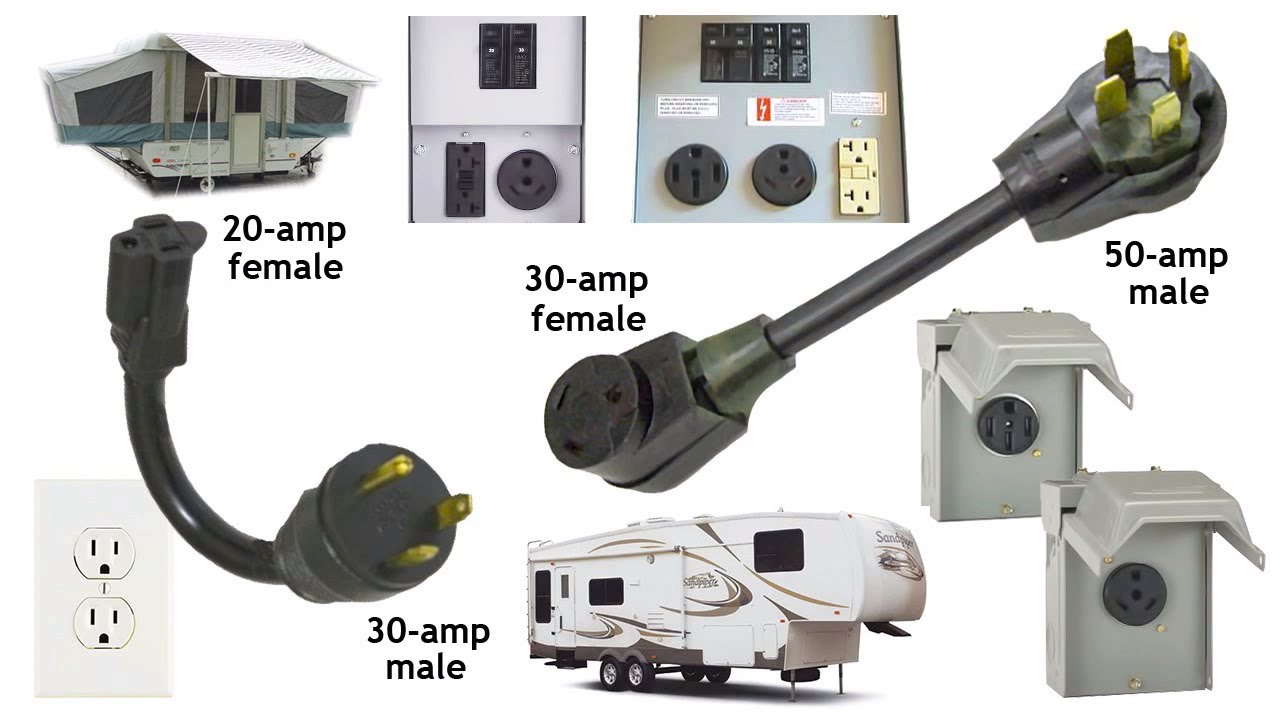This is an old revision of the document!
Table of Contents
Shore power
Shore power is AC power derived from the electric grid. The most common places RVers use shore power is when plugged in at someone's house or at an RV park with full hookups (FHU).
 The most common types of campsite hookups are:
The most common types of campsite hookups are:
- 15A/20A and 30A
- 30A and 50A, with 50A costing more
- 15A/20A only
- 30A only
15A/20A shore power
15A power receptacles are the familiar ones found in a residence.1) They are also the current rating many DIY RVs and vans are built around.
20A power receptacles are similar but the “hot” leg has an additional spur.2) This arrangement allows 15A plugs to go into 20A receptacles but prevents the heavier duty 20A plugs from being used in a 15A circuit. Boondockers and vandwellers will likely set up their shore power to run on the 15A. Because of the backward-compatible 20A socket they will be able to use their 15A plugs at both 15A and 20A hookups.
Note: using a 10A circuit breaker on the RVs AC breaker box will prevent tripping a residential circuit breaker from tripping when the RVer might not have access to reset it. A 15A breaker might, depending on whether the RV or residential breaker trips earlier.
A 'dweller can safely power a 15A RV from a 30A outlet with an adapter. 15A Extension cords should be 12-14ga for 50' cords and 10-12ga for 100' cords.
30A shore power
30A is the standard setup for small-to-medium RVs.3) It is typically sufficient to run an air conditioner and other items in the RV.
If the 30A circuit on a 30A/50A pedestal is broken or malfunctioning the camper can use an adapter to get power from the 50A circuit.4) Note this may incur a price increase from the park.
The RV can also run off a 15A/20A outlet but would have to be careful about loads (heavy loads like a single A/C unit, electric cooktop, or microwave would have to be run one at a time).
50A shore power
50A systems are most common in large, luxury RVs with two or more A/C units.
power testers
Before plugging into shore power the RVer may want to test the receptacle for “good ground, open circuits, reversed polarity and safe voltage.”5) Note that the tester reports conditions at the time of testing; it might tell you if voltage is too high right now but not protect the RV if the voltage spikes later on.
surge protectors
Dogbone surge protectors are inexpensive, but they are generally only good for one surge (or maybe several small ones). More full-featured surge protectors will disconnect power to the RV in over/undervolt conditions and will reconnect after a certain period of stability.

